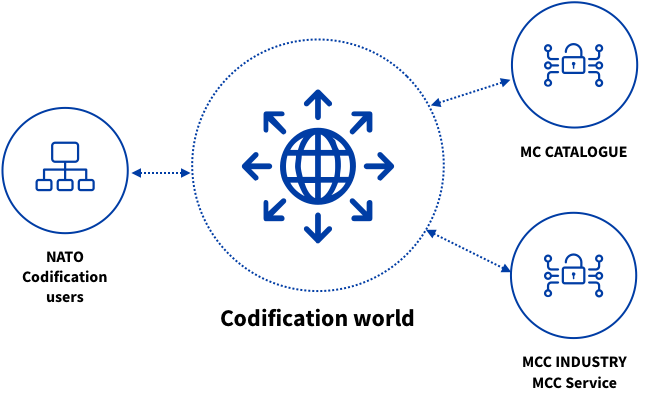There must be order in the army, especially in the modern times. We provide codification of assets due to integrated NATO Codification System in many member countries of North Atlantic Organisation and outside. Thanks to precise classification and identification of weapons, military equipment, spare parts… – in short, all the material as such – the armed forces save millions EUROs.
MC Catalogue in Numbers
Over 2,000 users in 20 countries on 5 continents
Almost 4 million NATO stock numbers (NSN) from 18 million in total
9 language versions


Services for MC Catalogue
Our user can approach us in any time with request for support via web application JIRA Service Desk, by e-mail or phone call to our hotline. We never let the request for support whether it is a question, suggestion for MC CATALOGUE improvement or error report, without response.
MC Catalogue Functions
MC Catalogue Strategic Advantages
User friendly and intuitive system.
Application stability and short response time.
Supporting all levels of engagement in NCS: NATO, Tier 2, Tier 1.
Individual adjustment – customisation.
Always in compliance with the latest NATO requirements.
Available both in form of licence and service (SaaS).
MC Catalogue Support and Maintenance
Recommendation or supply of necessary hardware.
Migration of data from current systems.
Data cleaning – putting current data on material in order.
User and administrator support via JIRA Service Desk, by e-mail or telephone.
Training of lecturers so that they can train the users by themselves.
Regular upgrades and new versions.
Adjustments resulting from changes of standards – guaranteed compatibility with NATO standards.
Consultancy and methodological support in system operation.
Consulting support of National Codification Bureau (establishing of the bureau, its development, customer support in situ or remote).
Monitoring of the operated system.
User training – standard training when introducing the system, additional training as needed.
Training of administrators.
Creating and maintaining interface with other logistic information systems (i.e. SAP or customer proprietary systems).
Fixing of errors, providing patches.








